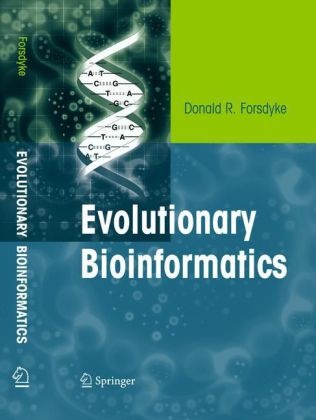Read more
For decades, bioinformatics textbooks have primarily served gene-hunters and biologists constructing family trees showing tidy lines of descent. Written to make the new information-based bioinformatics intelligible to both the bio and the info audiences, this book identifies the types of information that genomes transmit, shows how competition between different types is resolved in the genomes of different organisms, and identifies the evolutionary forces involved. Early chapters relate the form of information with which we are most familiar, namely written texts, to the DNA text that is our genome. Providing a pathway for introducing historical aspects dating back to the nineteenth century. Evolutionary Bioinformatics aims to make the "new" information-based (rather than gene-based) bioinformatics intelligible both to the "bio" people and the "info" people. Books on bioinformatics have traditionally served gene-hunters, and biologists who wish to construct family trees showing tidy lines of descent. While dealing extensively with the exciting topics of gene discovery and database-searching, such books have hardly considered genomes as information channels through which multiple forms and levels of information have passed through the generations. This "new bioinformatics," contrasts with the "old" gene-based bioinformatics that so preoccupies previous texts.
Evolutionary Bioinformatics extends a line of evolutionary thought that leads from the nineteenth century (Darwin, Butler, Romanes, Bateson), through the twentieth (Goldschmidt, White), and into the twenty first (the final works of the late Stephen Jay Gould). Long an area of controversy, diverging views may now be reconciled. The book is unique in emphasising non-genic aspects of bioinformatics, and linking modern evolutionary biology to a history that extends back to the nineteenth century. Forms of information that we are familiar with (mental, textual) are related to forms we are less familiar with (hereditary).
List of contents
Prologue.- Part 1: Memory-A Phenomenon of Arrangement.- Chargaff s First Parity Rule.- Information Levels and Barriers.- Part 2: Chargaff s Second Parity Rule.- Stems and Loops.- Chargaff s Cluster Rule.- Part 3: Mutation and Speciation.- Species Survival and Arrival.- Chargaff s GC Rule.- Part 4: Conflict with Genomes.- Conflict Resolution.- Exons and Introns.- Complexity.- Part 5: Conflict Between Genomes.- Sef/Not-Self?- The Crowded Cytosol.- Part 6: Sex and Error-Correction.- Rebooting the Genome.- The Fifth Letter.- Epilogue.- Appendix 1: What the Graph Says.- Appendix 2: Scoring Information Potential.- Appendix 3: No Line?- Acknowledgements.- References and Index.

